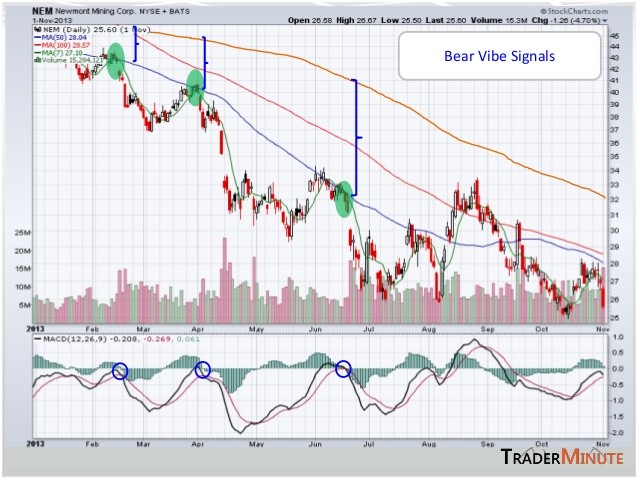Moving Averages_2
Post on: 22 Май, 2016 No Comment

Quick Links
Tutorials | Technical Indicators Tutorial | Written by TradingEducation.com |
Perhaps the simplest to understand and most widely used technical indicator is a moving average, which smoothes past data to illustrate existing trends or situations where a trend may be ready to begin or is about to reverse. A moving average helps you spot market direction over time rather than being caught up in short-term erratic market fluctuations. There are three main types of moving averages:
- Simple. Each price point over the specified period of the moving average is given an equal weight. You just add the prices and divide by the number of prices to get an average. As each new price becomes available, the oldest price is dropped from the calculation.
- Weighted. More weight is given to the latest price, which is regarded as more important than older prices. If you used a three-day weighted moving average, for example, the latest price might be multiplied by 3, yesterday’s price by 2 and the oldest price three days ago by 1. The sum of these figures is divided by the sum of the weighting factors — 6 in this example. This makes the moving average more responsive to current price changes.
- Exponential. An exponential moving average (EMA) is another form of a weighted moving average that gives more importance to the most recent prices. Instead of dropping off the oldest prices in the calculation, however, all past prices are factored into the current average. The current EMA is calculated by subtracting yesterday’s EMA from today’s price and then adding this result to yesterday’s EMA to get today’s EMA. An EMA generally produces a smoother line than other forms of moving averages, which can be an important factor in choppy market conditions.

Closing prices for a period are usually used to calculate a moving average, but you can also use the open, high or low or some combination of all of them. Moving averages are often used in crossover trading systems. A buy signal occurs when the short- or intermediate-term averages cross from below to above the longer-term average. Conversely, a sell signal is issued when the short- and intermediate-term averages cross from above to below the longer-term average.
Another trading approach is to use the current price method. If the current price is above the moving average, you buy. Liquidate that position when the current price crosses below your selected moving average. For a short position, sell when the current price falls below the moving average. Liquidate that position when the current price rises above the average.
Because the moving average changes constantly as the latest market data arrive, many traders test different specified time frames before they come up with a series of moving averages that are optimal for a particular market.
Some use combinations such as 5-day, 10-day and 20-day moving averages, taking crossovers of the shorter moving average over the longer moving average as a trading signal. Still others use longer-term moving average lines as another point of support or resistance.
In short, moving averages have a number of applications and are easy to understand, making them a clear indicator choice for many traders.














